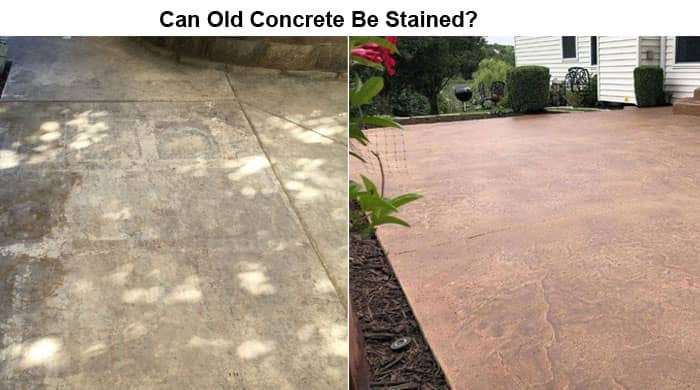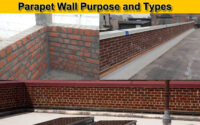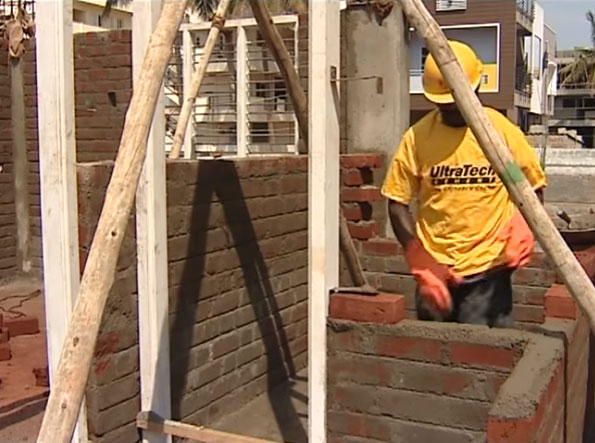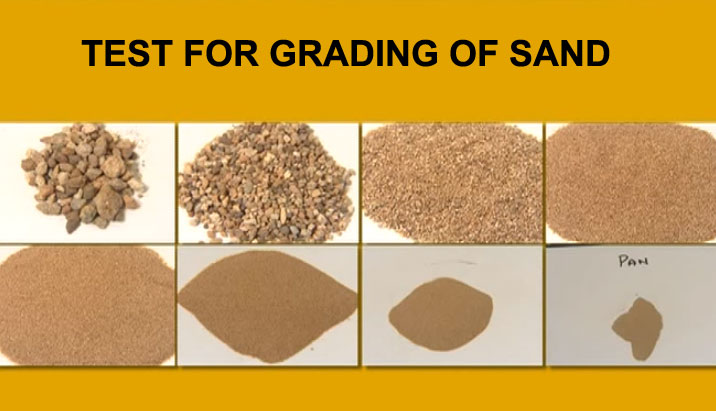Can Old Concrete be Stain | How to Stain Concrete Floors
Is it possible to stain old concrete? is one of the most frequently asked queries. Although concrete patios and walkways are lovely, they can become outdated with time. in particular, if they are not kept up with. The short answer is yes, ancient concrete can be stained with acid. Although the procedure isn’t much different from staining fresh concrete, there are a few more procedures you should take and some critical information you should be aware of.
Acid stains are colorful washes that penetrate concrete pores. Unlike paint, stains don’t cover the surface. The stain won’t cover as intended if it can’t penetrate the pores of your concrete. This implies that stained old concrete cannot be sealed, covered in epoxy, filthy, or painted. The condition of the concrete is more important to the stain’s effectiveness than its age.
Avoid using acrylics and paint. Paint and acrylic “stains” that resemble paint are both surface coverings rather than actual stains. They don’t mix with the concrete and absorb. They will eventually start to peel up and look bad, which will ultimately cost you money. Real acid staining is a chemical process that alters the concrete’s color permanently.
Use a real acid stain on a surface that is completely clean and free of stains or old paint if you wish to stain old concrete.

Can Your Old Concrete Be Stained?
An enjoyable and simple technique to update your concrete surface is to stain old and outdated concrete. However, the concrete must be spotless and free of any trash. Because they have heard horror stories about botched staining jobs, many individuals believe that ancient concrete cannot be stained. However, in most cases, that isn’t because the concrete is old, but rather because of its state. If the concrete is unclean, grimy, or painted or sealed, it cannot be acid stained, not even new concrete.
Concrete must be bare, and clean concrete in order to be stained.
This is due to the way acid stains function. When placed onto a concrete surface, concrete acid stains are a very thin mixture of coloring and chemicals that seep into the concrete’s pores and produce color. The acid stain won’t function if it can’t absorb.
Concrete cannot be acid stained if its pores are clogged because the acid stain has to penetrate the concrete’s pores.
Pores can become clogged by a variety of substances, but sealants, paint, dirt, and grime are the most prevalent issues.
Concrete is coated with paint, epoxy, and sealants, which enter into the concrete’s pores and block the stain. No matter how ancient the concrete is, the stain won’t take if the pores are blocked.
The good news is that you can dye concrete as long as you clean it correctly. Regardless of how old it is.
Don’t worry if your older concrete has been coated or sealed. A few methods exist for getting rid of it.
You shouldn’t clean your old concrete with muriatic acid. Important minerals required to achieve the spectrum of colors you want from a concrete stain will be destroyed.
How to Stain Concrete
Be prepared to dedicate at least 24 to 48 hours to finishing this task because staining concrete takes time. The finish can be damaged by rain, water, and any movement on the concrete surface if these coatings are not completely dry, so keep in mind that the majority of this time is spent waiting for the stain and sealant to cure.
Step 1: Clean dust, dirt, and debris.
Only a spotlessly clean, properly prepared concrete surface will yield the best results. If not, dirt, dust, and debris may keep the stain from adhering to the concrete, resulting in an asymmetrical mess.
With a stiff brush, begin by sweeping and cleaning the concrete. To remove stubborn dirt, you can also use a mop, water, and a mild detergent. It might be simpler to clean the concrete with a power washer if you’re working outside.
Step 2: Repair cracks with concrete sealant.
Concrete materials are susceptible to cracking over time, so patch up any cracks with a concrete crack sealant before staining. Use a floor cleaner to smooth down any rough places after the sealant has dried for at least 24 hours.
Step 3: Prepare the stain.
To protect any surfaces or objects that cannot be moved out of the workspace from the stain, set up drop cloths and cover them with painters tape. If you are staining a relatively small surface or working in a limited area, you can apply stain with a roller or brush, but it’s advised to use an acid-resistant airless paint sprayer if you are staining a large surface, such as a garage floor. Follow the manufacturer’s instructions for loading the water-based stain or acid stain into the paint sprayer. Alternatively, you can add stain to a paint tray for quick access with a roller or brush.
Step 4: Apply stain with a sprayer, roller, or brush.
Getting even coverage is the aim when applying a stain. To avoid getting trapped in a corner when moving through an enclosed space, begin at the back of the room and move forward toward the door. Apply the stain evenly across the surface using a roller and brush combo. The brush is especially useful in small gaps and tight places that a roller and possibly a sprayer can’t access.
Step 5: Let the stain dry.
After successfully dyeing the concrete, you must allow it enough time to completely dry. The recommended drying time will vary depending on the stain, so consult the manufacturer’s instructions. Before applying sealant, stains typically need at least 24 hours to completely dry.
Step 6: Use a concrete sealant to protect the stained surface.
Applying a concrete sealer will shield stained concrete from physical and chemical harm. Apply the sealer to the desired surface after making sure the stain is completely dried. Before buying a sealant, it’s a good idea to check the information provided by the manufacturer as many concrete stain manufacturers recommend sealants that go well with the particular stain. Prior to starting normal use of the area again after application, let the sealant dry.





